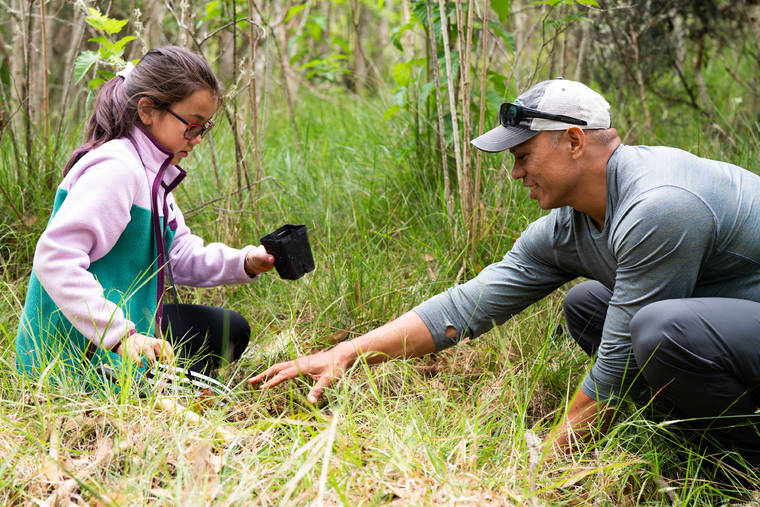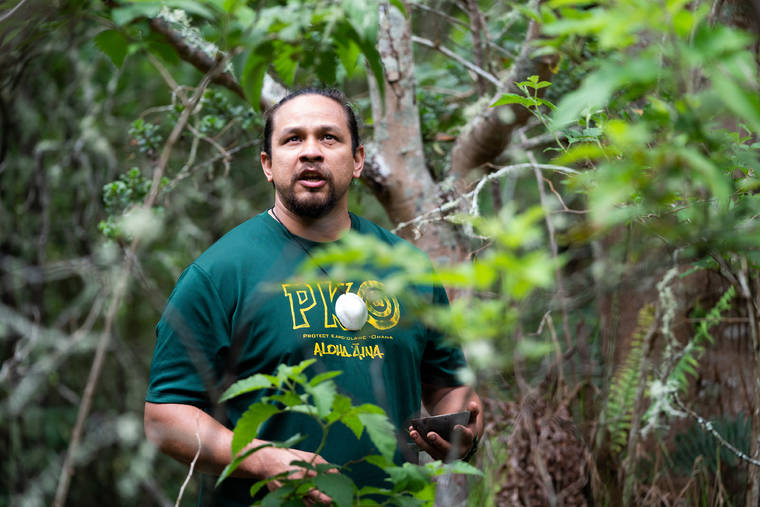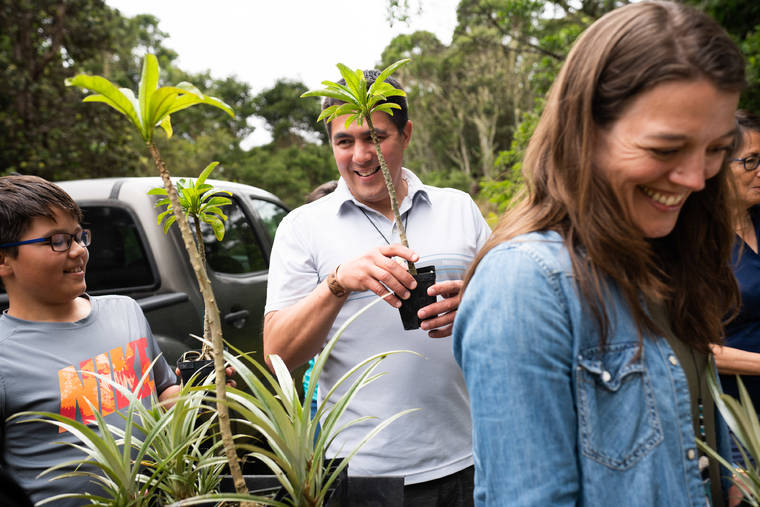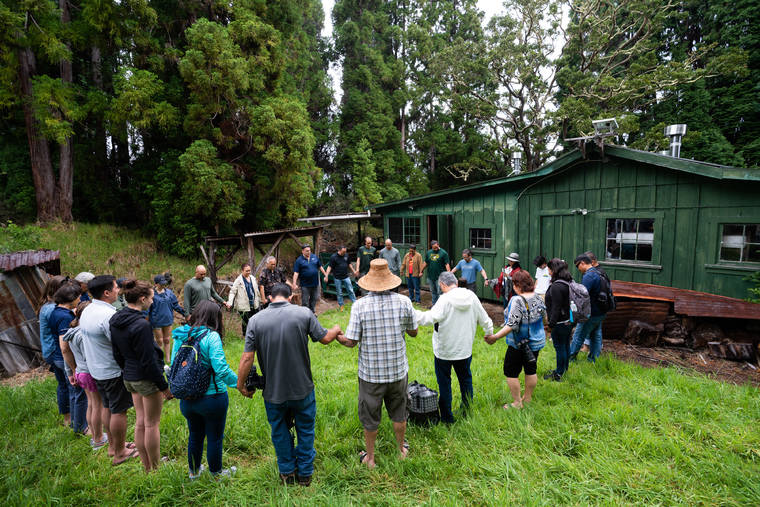HONOLULU – As a precursor to the Hooilina Conference, Kamehameha Schools and the Polynesian Voyaging Society hosted Sealaska leaders on a day trip to Hawaii Island to revisit the past.
Almost 30 years earlier, Native Hawaiian and Alaskan leaders gathered in ceremony on the upper slopes of Keauhou to promote the restoration of Hawaii’s declining koa forests.
The section of forest sits above Kilauea and runs down to the sea below Pahala.
The original visit back in 1990 was to accept the precious gifts of two Sitka spruce logs from Sealaska to build the Hawaiiloa canoe, and to affirm a commitment to restore Hawaii’s threatened forests.
The purpose of the May 27 visit was to remember, honor and celebrate those acts of kindness that have strengthened the bonds of kinship between Hawaii and Alaska and helped restore this sacred environment.
“Continuing to build relationships with Hawaiians and other indigenous people is important to Sealaska,” Sealaska President and CEO Anthony Mallott said. “The Hawaiian and Tlingit, Haida and Tsimshian people have a deep connection as ocean and canoe people, who are deeply tied to their environment. Good relationships between indigenous people who have common histories can help advance common goals.”
In 1989, the Native Hawaiian Culture and Arts Program, based at the Bishop Museum, and the Polynesian Voyaging Society were unable to locate suitable koa trees to create a traditional Hawaiian voyaging canoe because Hawaii’s forests were in decline.
In 1990, Tlingit elder and then Sealaska board chair, the late Judson Brown, and then CEO of Sealaska Byron Mallott, gifted two Sitka spruce from Shelikof Island, Soda Bay, Prince of Wales Island with the belief that the Alaska and Hawaii communities would forge a special bond and their descendants would be enriched, inspired and would carry their cultural legacies forward. It led to the growth of the Koa Reforestation Program, a formal program whereby the Kamehameha Schools community and students made regular visitations up to the forest to stay for several days to focus on reforestation as well as cultural and spiritual growth.
As a result, there are areas forested with koa today that are well on their way to generating tall healthy koa trees so that future generations may someday construct traditional canoes like Hawaiiloa and Hokulea, but made with Hawaii’s own native koa timber.
Participants of the May 27 trip to Hawaii Island included KS CEO Jack Wong and executive cultural officer Randie Fong; Sealaska chair Joe Nelson, president and CEO Anthony Mallott, and former president and CEO Byron Mallott; and Hokulea crewmember and KS West Hawaii regional director Kaimana Barcarse.
The Mallotts and Fong were both part of the first visit to the area 30 years ago. Other cultural leaders who were part of the 1990 visit were Alaskan Tlingit tribe elder Judson Brown, Pinky Thompson, Herb Kane, canoe builders Wright Bowman Sr. and Wright Bowman Jr., and Nainoa Thompson.
The visit started with a stop at Kilauea to offer chant and request permission to visit the sacred land of Keauhou.
After arrival at the native forest, the group was able to witness the growth of the forest since 1990 – a result of KS’ koa reforestation efforts that involved students and the community. Each person then planted native plants painiu and ohawai followed by prayer, chant and reflections from the group about the importance of working together in unity to protect nature, as well as the knowledge and traditions of our ancestors.
“We planted seedlings back in 1990 at a site we are visiting today. The purpose of this is to say we honor that act, and we celebrate the past, and as we are celebrating and remembering we are planting new seeds for the future,” Fong said.












